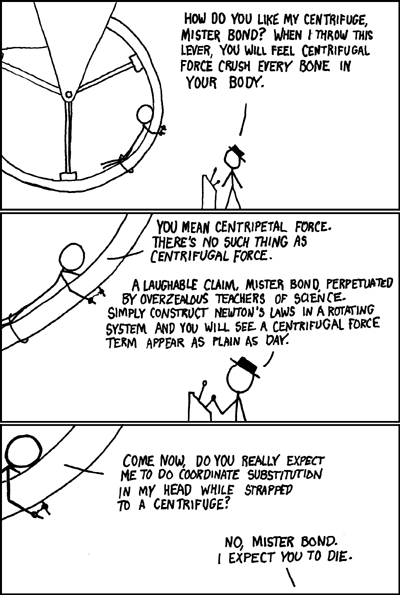Actually no, because the Earth itself is not a solid object. You are pushing back a part of terrain. Seriously, I explained this. And as a result of this, you're dispersing your kinetic energy against a variety of targets, including disparate layers of the whole planet. This is chaos at work. If this didn't happen, two cars moving slowly in different directions would destroy the planet. The force STILL has to go somewhere.
Even accepting that motion is relative, there is a standard of use in all things. In Trek, it's the galatic center crossed by Sol's position. Just saying 'it's all relative anyway' is just an intellectual cop-out to zero-out any discussion of drive theory.
Years of living with and under engineers has taken their toll...
Even accepting that motion is relative, there is a standard of use in all things. In Trek, it's the galatic center crossed by Sol's position. Just saying 'it's all relative anyway' is just an intellectual cop-out to zero-out any discussion of drive theory.
Years of living with and under engineers has taken their toll...


 It still boils down to from the relative view inside the car, it is at a standstill while it moves a part of the Earth underneath it.
It still boils down to from the relative view inside the car, it is at a standstill while it moves a part of the Earth underneath it.

